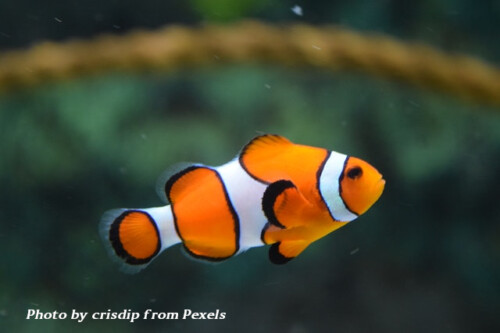Why Set Up a Fish Tank?
You’ve been to the pet store and noticed the fish tanks and thought “maybe I could do that”. Guess what, you can “do that” and it’s not nearly as difficult as you may think.
The tropical fish keeping hobby has come a long way over the past decade thanks in part to advances in aquarium equipment and the plethora of readily available information. There are many outstanding fish and aquarium books available as well as an abundant amount of information on the internet, forums and discussion groups. Running your own tank is way easier than it was just 10 years ago.
In the past, folks would go to the pet store and buy the tank, equipment and fish all at once not knowing they were setting themselves up for failure. They would get the aquarium set up and running, put some fish in and everything would be fine for a couple of days but then the fish would start to die. Now we know better. We know about the crucial aquarium nitrogen cycle that must take place in all new tanks. We know how to properly acclimate tropical fish to our tank water and how to periodically use our aquarium test kits to test the tank water to make sure nothing is out of whack. We have better access to fish behavior and can determine which fishes shouldn’t be kept together in the same tank. The information is out there, at our fingertips, at libraries, book stores and the search engines.
So, with all this available information we can quickly come up to speed with running a tank in our home. There are many different types of aquarium setups but the most common types are freshwater, saltwater fish only and saltwater reef tanks. Here is a very brief intro:
Freshwater Aquarium
The mainstay of the hobby and the most popular setup, a freshwater tank setup can be a great first tank and it will give you the necessary experience needed for branching out into other types of tanks. This setup is the least expensive in terms of equipment and livestock and is not usually as demanding as the other types. There are literally hundreds of different types of fish available so finding a species you’ll like shouldn’t pose a problem. You can keep live aquarium plants in your tank as well. Keeping plants may require an upgrade to your lighting system and you may have to add supplements to your tank water. Freshwater aquarium plants add another dimension of beauty to a freshwater tank.
Saltwater Aquarium
Saltwater tanks are perceived to be more difficult than freshwater tanks. In times past, that statement may have been true but I don’t think that is necessarily the case today. With the increasing use of live rock as the primary biological filter in a saltwater tank setup, the chances of successfully running this type of aquarium have dramatically improved. A fish only saltwater tank equipped with live rock will be more expensive than a freshwater tank because you’ll need to purchase live rock and a protein skimmer. Marine fish are also more expensive than their freshwater counterparts.
Saltwater Reef Tank
The ultimate tank setup in this hobby has to be the reef tank. It’s like having a small piece of the coral reef in your living room. The emphasis is on the corals and invertebrates with a limited amount of fish. These tanks are however, more expensive to setup and maintain. Equipment such as metal halide lighting, protein skimmers, live rock, testing equipment, supplements, water purification units (reverse osmosis and deionization) and sumps drive the cost of this setup. Don’t forget about the ongoing maintenance costs (electricity) as well. The livestock costs for live corals, fish and invertebrates are also very expensive. This type of tank can be very demanding when first set up because you’ll need to monitor the water parameters periodically and take corrective action when necessary. Even though this is the most expensive type of setup, it can also be the most breathtaking. You should to do your homework (research) and figure out exactly what you want to accomplish befo!
re buying your first piece of reef equipment.
No matter what type of tank setup you choose, as long as you do your homework beforehand you’ll enjoy this hobby. Research the equipment and livestock before purchasing them and you will prevent many headaches and keep some of that hard earned money in your wallet!
The satisfaction of watching fish in our home can be relaxing, educational and can be a great conversational piece all at the same time. Many kids are extremely fascinated with tropical fish and you can use this as a great learning tool to teach your children responsibility, biology and science. Teach them about the critical biological cycle that takes place called the Nitrogen Cycle. Teach them how to test the tank water for ammonia, nitrite, nitrate and pH. Show them the proper way to feed and care for the fish. Show them how to do water changes and maybe they can help out with this vital task required for keeping fish in our homes. Explain to them why we can’t keep a common pleco in our 10 gallon tank. The educational opportunities abound.
If you’re interested in setting up your own tank I encourage you to do some homework beforehand. Go out and purchase an aquarium book on the type of tank you’re interested in, subscribe to a tropical fish magazine, browse the internet and join a tropical fish forum to increase your knowledge. This is a fun and exciting hobby that gets better all the time!
Author Bio
Mike is an editor for FishLore, an aquarium fish website specifically designed for beginners to the fishkeeping hobby.
Article Source: http://www.ArticleGeek.com – Free Website Content
Photo Credits: crisdip
This posting is for informational purposes and does not imply endorsement by this website.

